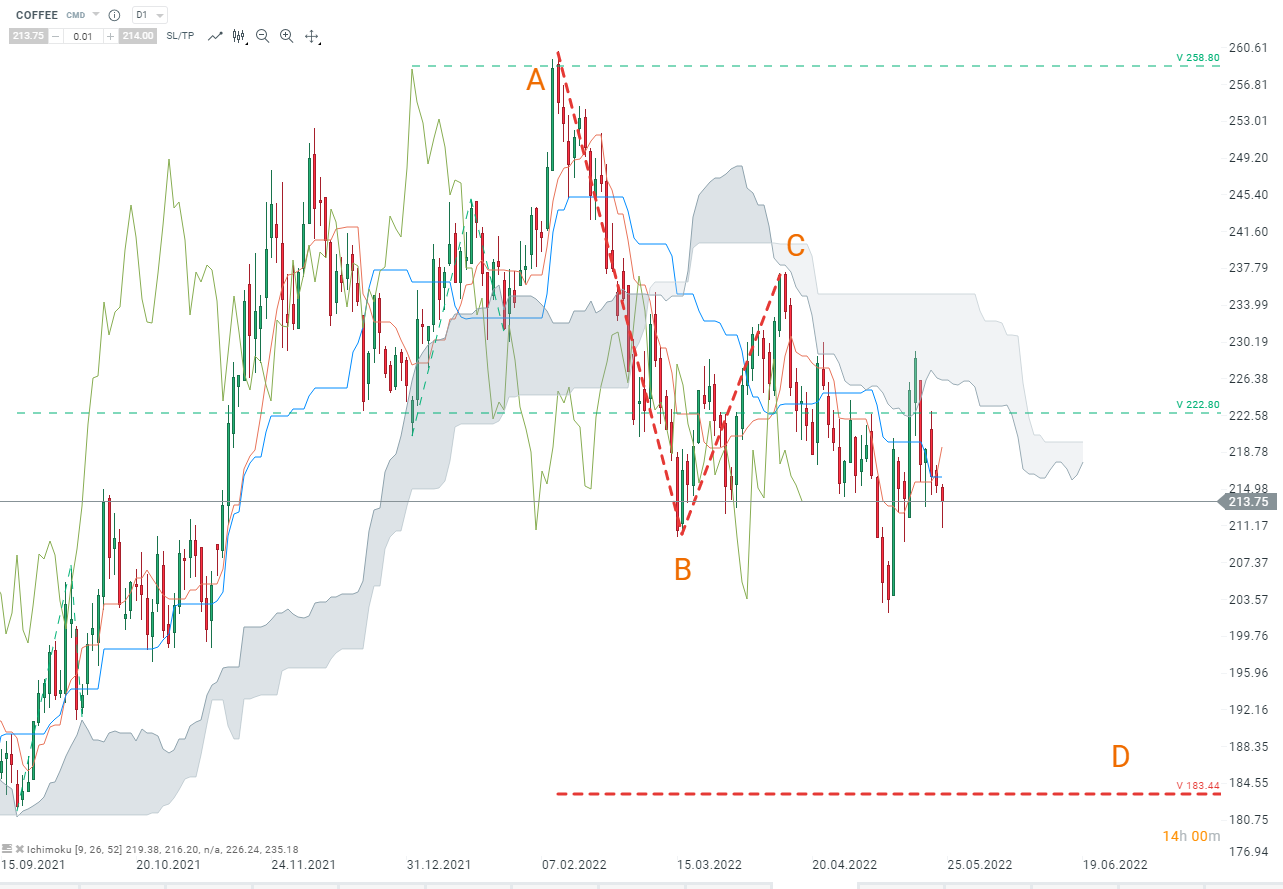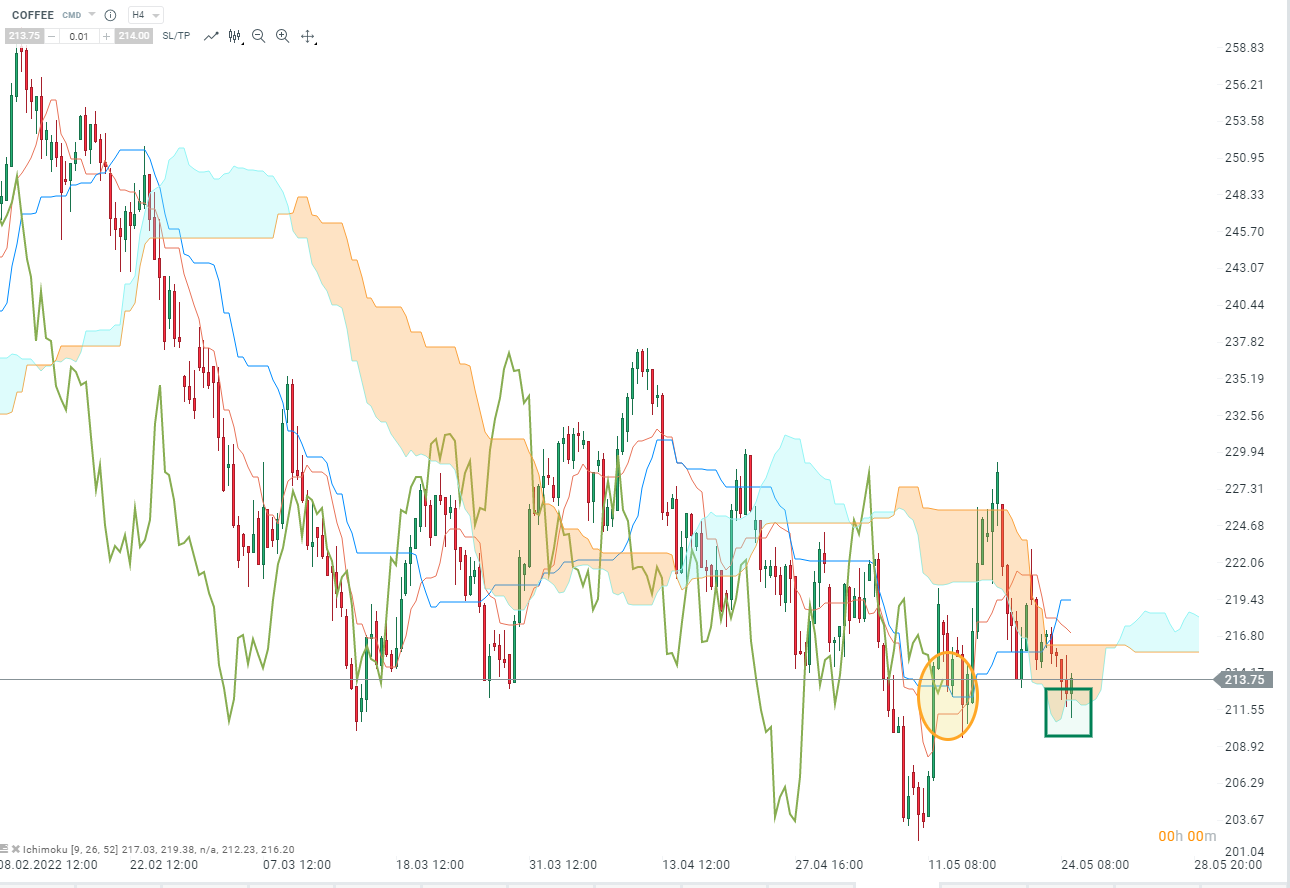Lockdowns in China and the Russia-Ukraine war remain the key downward risks of coffee demand. A recent report forecasts that the demand for coffee will decline by 25% and 50% in Russia and Ukraine respectively. Moreover, it predicts a shift from the recorded deficit of 5.1 million bags in the 2021/22 season to a surplus of 1.7 million bags in 2022/23. The expected surge in supply has driven prices down in the beginning of this new week. Eased concerns over frost in Brazil have also curbed coffee price gains. Investors were concerned that the below-average temperatures will result in intense crop damage.
Let's see if the Ichimoku analysis confirms these bearish fundamentals.
Start investing today or test a free demo
Open real account TRY DEMO Download mobile app Download mobile app
Ichimoku analysis :
As can be seen, the Ichimoku daily cloud has acted as resistance to every attempt at a bullish recovery. The highs and lows are getting lower and lower, confirming the ongoing downtrend. Moreover, a further break of the support at 210 (point B), could lead to an acceleration of the decline towards the Hosoda V projection at 183.50.
Therefore, if the psychological level at 200 is breached, there is a good chance that coffee prices will confirm the aforementioned Hosoda projection.

COFFEE, D1 interval, Source : xStation5
When we take a look at the H4 chart, we can see that coffee prices are about to give a sell signal. Indeed, prices are about to break out from the bottom of the cloud (green box) and this sell signal could be validated by the lagging span, which is also about to cross a last obstacle (yellow ellipse). If this signal occurs and is validated by the lagging span, the bearish scenario we discussed above would be the base scenario.
On the other hand, if the bulls regain control of the market and prices manage to break out of the top of the cloud at 216.25, they will have to tackle the resistance at 220.
 COFFEE, h4 interval, Source : xStation5
COFFEE, h4 interval, Source : xStation5
Reda Aboutika, XTB France
